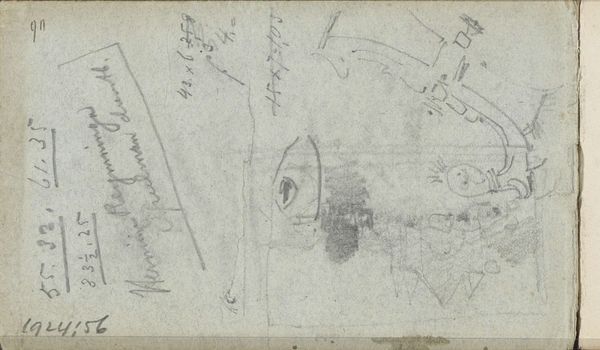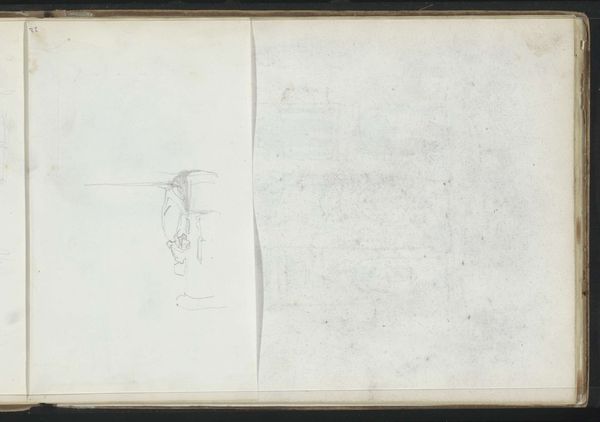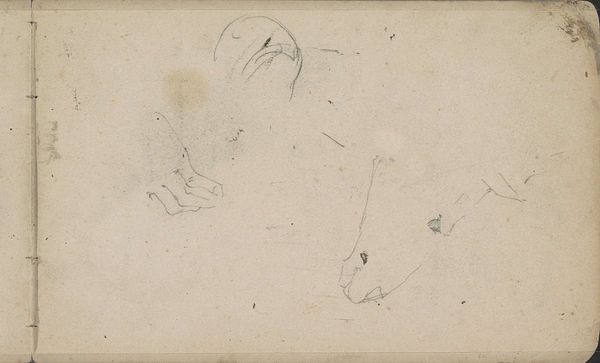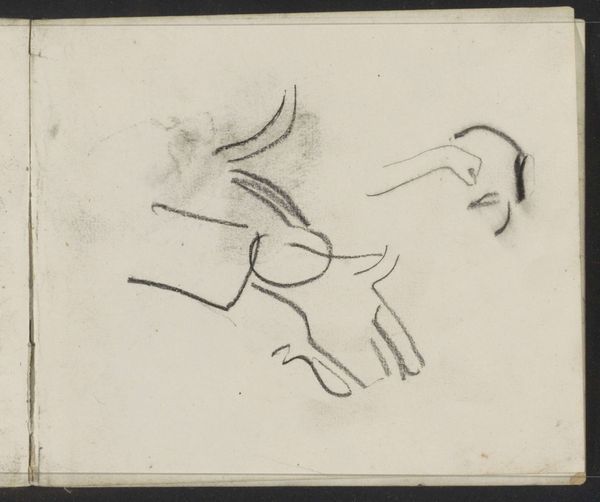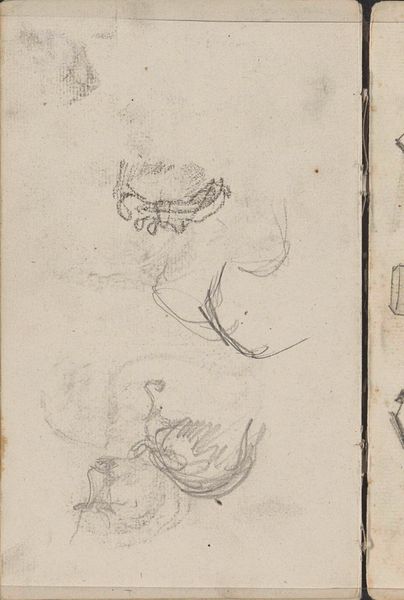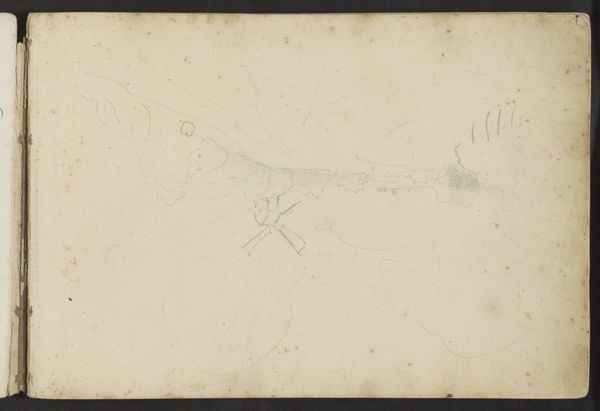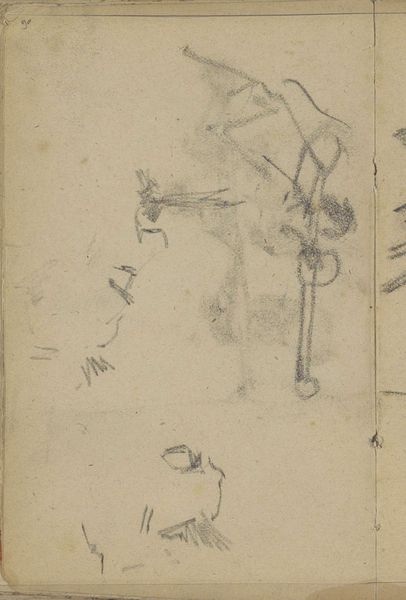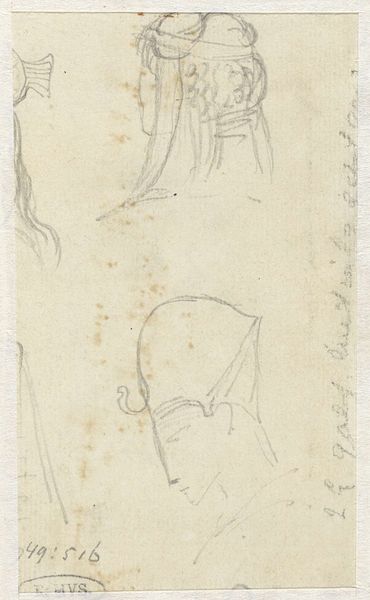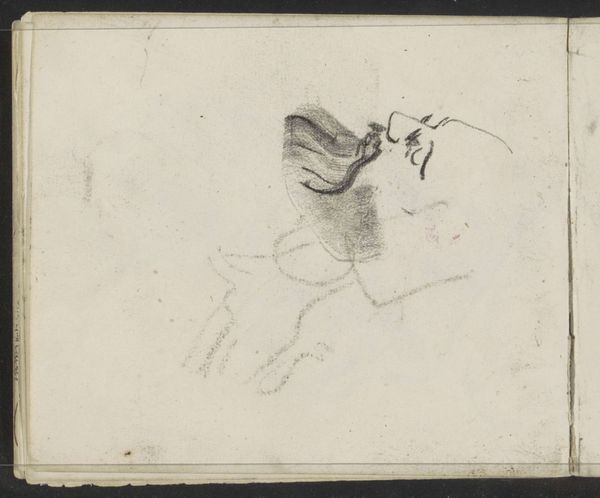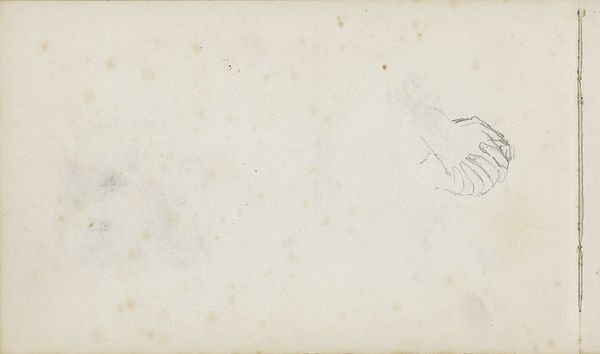
Copyright: Rijks Museum: Open Domain
Editor: Here we have Isaac Israels's sketch "Twee staande vrouwen een een paraplu," likely from sometime between 1886 and 1934. It’s a pencil and ink drawing, seemingly a quick impression jotted down in a sketchbook. It has an intimate, almost voyeuristic feel. What do you see in this piece, beyond the obvious figures? Curator: This unassuming sketch holds a wealth of social commentary, doesn't it? Consider the period—late 19th, early 20th century. The women are rendered with a swift, almost dismissive hand. Is Israels capturing women simply as fleeting impressions? Or is he reflecting a society that often reduces women to background figures? The umbrella, a symbol of protection and perhaps even status, becomes a focal point. But from what are these women seeking shelter? Editor: That’s interesting. I hadn't considered the umbrella as a symbol of protection beyond just the weather. Perhaps it's protection from the male gaze? Curator: Precisely! Or protection from the social expectations placed upon them. These are working women, likely of modest means, navigating a rapidly changing urban landscape. Their bodies are hinted at but not fully defined. The incomplete nature of the sketch itself becomes a commentary on the incomplete stories often told about women in this period. Israels isn't offering a romanticized view, is he? Editor: No, it feels very matter-of-fact, almost clinical. I see what you mean about the incompleteness reflecting a larger social issue. Curator: And that’s where art truly shines – it's capacity to engage us to question pre existing perspectives Editor: Absolutely, looking at this drawing now, I’m definitely more aware of the complex narrative Israels hints at and the many layered cultural commentary regarding societal marginalization, which has given me so much more food for thought than a beautifully rendered or 'finished' painting ever could.
Comments
No comments
Be the first to comment and join the conversation on the ultimate creative platform.
